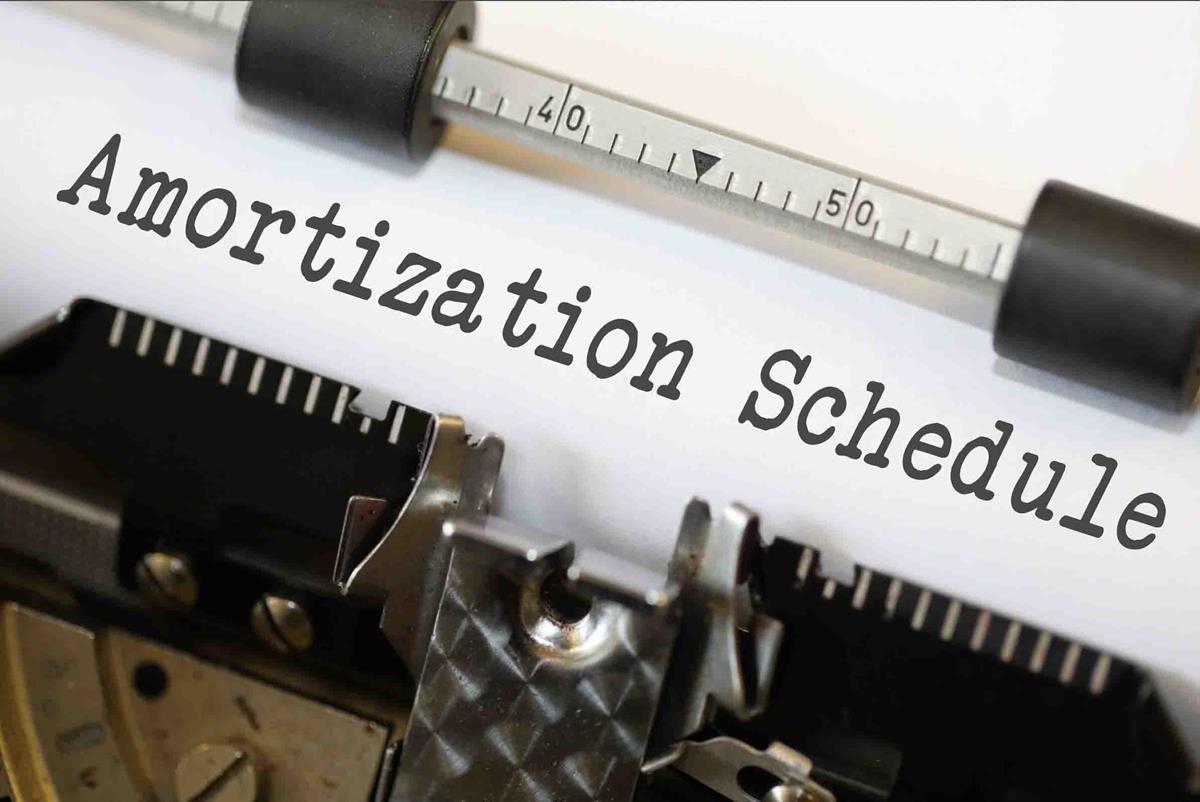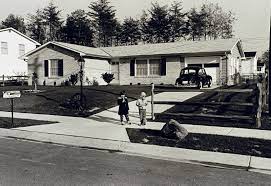When a loan is amortized each monthly payment is divided into principal and interest payments. The principal portion is applied towards the loan balance and
reduces the total amount due while the interest portion is paid to the lender as a fee for borrowing money. Typically, in the early years of a mortgage the
majority of each payment is used to pay interest and later in the life of the loan the majority goes toward principal. It is very common for mortgages, car
loans, and other forms of debt to be amortized. And as a result, knowing how to read and understand an amortizaion schedule is a very useful skill.
An amortization schedule is a table or chart that shows how each monthly payment affects the total balance of a loan over time.
The amortization table details how much of each payment is applied toward paying down the loan (principal) and how much is paid toward interest.
An amortization calculator, also sometimes called a loan payment calculator or mortgage calculator, is a great tool for tracking the current status of a loan
and can be used to calculate how making additional payments will reduce the balance and duration of the loan. In many cases, paying a little extra each month
can drastically reduce the time it will take to pay off the loan and the amount you will pay in interest. For example, If you had a $300,000 30-year mortgage
with a 6% interest rate and paid just $50 extra every month you would save $29,212 in interest and pay off the loan 2 years early.
A mortgage calculator with an amortization chart can help you understand how to save money on your mortage and pay off your loan faster.
REAL ESTATE INVESTMENT CALCULATORS
Amortization Loan Payment Calculator

Amortization Calculator
What is an Amortization Schedule?
How to Read an Amortization Table
A typical amortization calculator will display a table with each row representing on period in the life of the loan (usually months). The chart is usually read
from top to bottom with the top row representing the first month in the loan and the bottom row representing the last payment due. The table also usually has four
columns. The first column shows the outstanding loan balance at the beginning of the period. The next two rows show the amount of the monthly payment that will be
applied toward interest and principal and the final row shows what the new loan balance will be after that periods payment. For a standard loan the last row in the
table will have an ending balance of $0 indicating that the loan will have been paid in full at that time.
How to Calculate Monthly Mortgage Payment with Amortization
In many cases it may be useful to calculate what the monthly payment would be for a loan without having to talk to your lender. Fortunately,
calculating the monthly payment is fairly straightforward using the amortization formula.
The amortization formula has 4 variables:
PMT = Monthly payment needed to pay off the loan
PV = Present value (Total loan amount)
i = Periodic interest rate (if monthly payments are made then use the annual interest rate divided by 12)
n = Total number of payments (if monthly payments are made then use the number of months in the loan. Ex. 30 year loan * 12 months = 360 payments)
The formula to calculate the monthly payment for a loan is as follows:
Even easier, simply plug your numbers into the calculator below to see what the monthly payments would be.
The amortization formula has 4 variables:
PMT = Monthly payment needed to pay off the loan
PV = Present value (Total loan amount)
i = Periodic interest rate (if monthly payments are made then use the annual interest rate divided by 12)
n = Total number of payments (if monthly payments are made then use the number of months in the loan. Ex. 30 year loan * 12 months = 360 payments)
The formula to calculate the monthly payment for a loan is as follows:
PMT = (i * PV) / (1 - (1+i)^-n)
Even easier, simply plug your numbers into the calculator below to see what the monthly payments would be.
Monthly Mortgage Payment Calculator
Monthly Payment:
How to Calculate Payment Toward Interest and Payment Toward Principal
P = Principal (Remaining balance on the loan)
i = Periodic interest rate (If monthly payments are made then use the annual interest rate divided by 12)
i = Periodic interest rate (If monthly payments are made then use the annual interest rate divided by 12)
Interest = P * i
Mortgage Interest Payment Calculator
Interest Payment:
Principal = Monthly payment - Payment toward interest
Each month you make a payment the outstanding principal on the loan is reduced by that month's prinicipal payment.
How Can I Pay Off My Loan Early?
Increase your monthly payment - Paying a little extra every month instead of the minimum amount due can greatly reduce the total amount you'll pay over the life of the
loan and can also help you pay off your mortgage sooner.
Make biweekly payments instead of monthly payments - A tatic many people use to pay off their mortgage early is to make biweekly payments instead of monthly payments. With biweekly payments you pay half of your monthly payment every two weeks. Since some months have 5 weeks you will make two extra payments every year which is a great way to pay off your debt sooner.
Make additional payments - Anytime you get additional income outside of your regular pay, such as getting a bonus at work, an extra large commission check, or income from a side hustle, consider putting a portion of it toward paying down your loan. Any time you make an additional payment toward a loan, the entire amount goes toward paying down the principal loan balance and none of it goes toward interest. This can significantly impact how soon your mortgage gets paid off.
Make biweekly payments instead of monthly payments - A tatic many people use to pay off their mortgage early is to make biweekly payments instead of monthly payments. With biweekly payments you pay half of your monthly payment every two weeks. Since some months have 5 weeks you will make two extra payments every year which is a great way to pay off your debt sooner.
Make additional payments - Anytime you get additional income outside of your regular pay, such as getting a bonus at work, an extra large commission check, or income from a side hustle, consider putting a portion of it toward paying down your loan. Any time you make an additional payment toward a loan, the entire amount goes toward paying down the principal loan balance and none of it goes toward interest. This can significantly impact how soon your mortgage gets paid off.
Why is My Actual Mortgage Payment Higher than what the Amortization Calculator Says?
Amortization calculators only consider the principal and interest paid on your loan. However, in many cases a mortgage payment may include other costs that aren't
represented in an amortization chart. For example, property taxes, home insurance, mortgage insurance, and even HOA fees will sometimes be included in a mortgage payment.
None of those additional costs affect how quickly you pay off your loan and as a result they aren't included in an amortization schedule. To get a more accurate representation
of what your mortgage payment will be, you need to consider all of the costs included.


